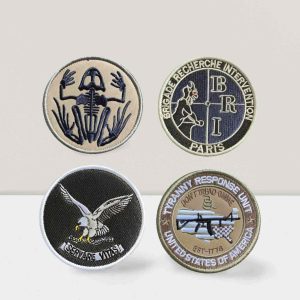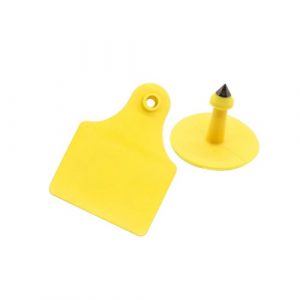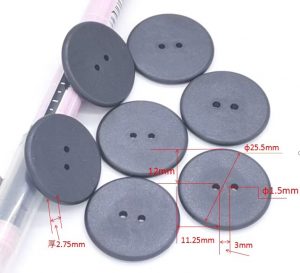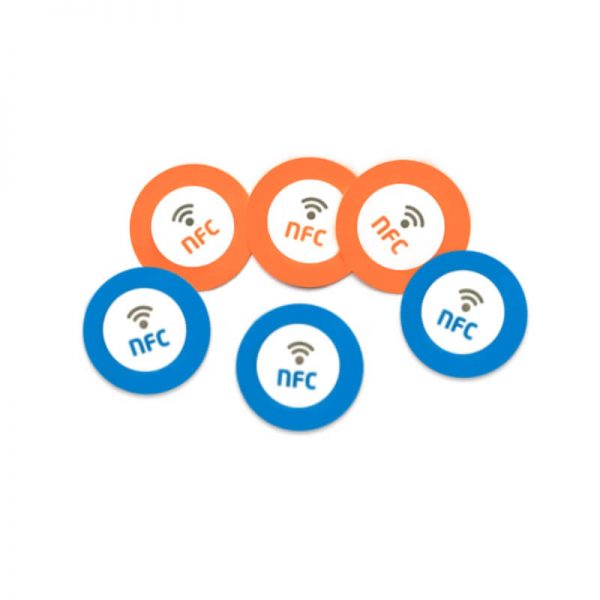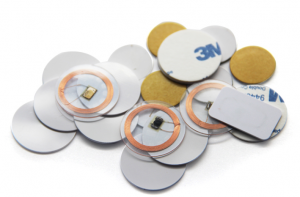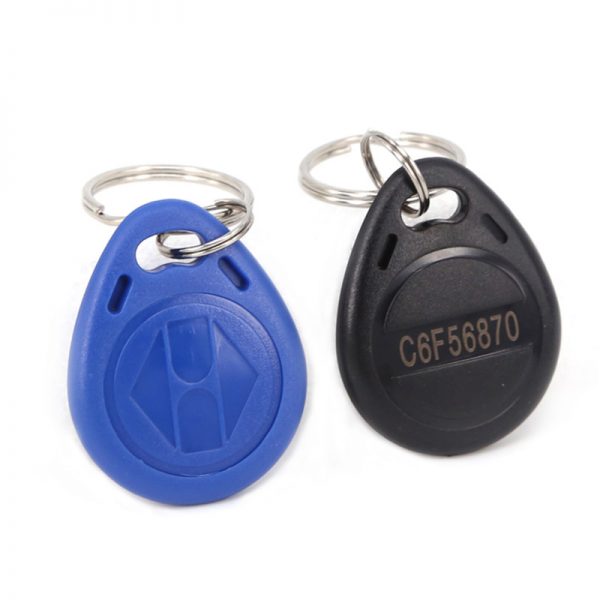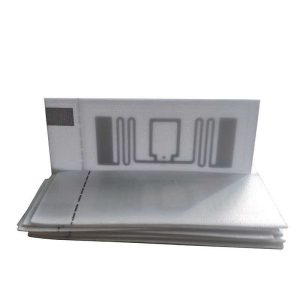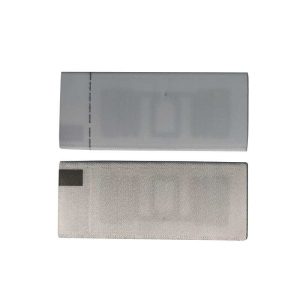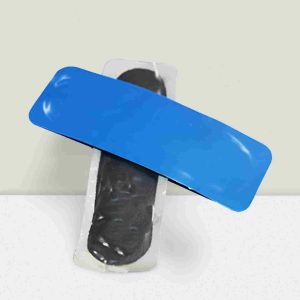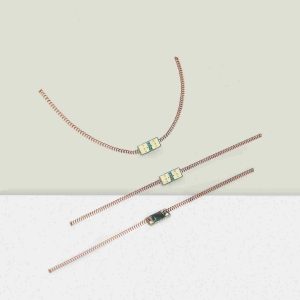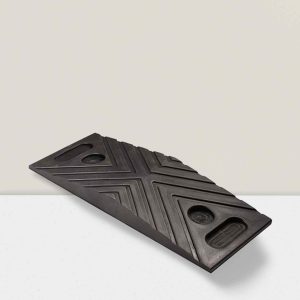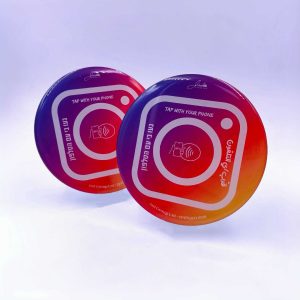RFID tags


Custom Fire and High Temperature Resist RFID Tag
RFID Tag Maker offer a range of customized RFID tags designed to withstand high temperatures. Our selection includes RFID ceramic tags, RFID PCB tags, RFID PPS tags, and RFID adhesive labels, each tailored to meet specific high-temperature requirements.
Our RFID ceramic tags are ideal for managing equipment in steel plants, while our RFID PCB tags are perfect for assembly lines. For items that undergo high-temperature washing, such as fabrics, our RFID PPS tags are the best fit. Our adhesive labels are versatile and can be used on windshields, headlights, tires, and more. Additionally, our RFID PCB tags are also suitable for tracking surgical instruments and other similar products.

Custom waterproof, anti-fouling and corrosion-resistant RFID tags
RFID Tag Maker offer a variety of RFID tags that are customized to be waterproof, resistant to fouling, and corrosion-resistant. Our selection includes RFID woven labels, RFID silicone tags, RFID ceramic tags, RFID PCB tags, PPS tags, and stickers, each designed to meet specific requirements.
Our RFID woven labels, silicone tags, and coin-shaped PPS tags are ideal for managing fabric inventory and personal protective equipment. Our RFID ceramic tags are perfect for managing gas cylinders, while our RFID PCB tags are suitable for assembly lines. For surgical equipment, our customized RFID PCB tags are the best fit. Additionally, our customized RFID ABS tags are excellent for managing trash bins, wood, and tree nail tags.

Custom Anti-pull and Anti-collision RFID Tag
RFID Tag Maker offer a range of RFID tags that are customized for anti-pull and anti-collision requirements. Our selection includes RFID silicone tags, RFID tags, RFID PPS tags, RFID self-adhesive tags, and RFID ceramic tags, each tailored to meet specific needs.
Our customized RFID PCB tags are ideal for use in high-speed industrial assembly lines and public facilities. RFID PPS tags are perfect for factory mechanical parts, while RFID self-adhesive tags are suitable for truck tires. Our RFID ABS tags are excellent for applications such as industrial robotic arms, sealing tapes, wood, and tree nail labels. Additionally, our customized RFID ceramic tags are the best fit for vehicle management in frames.

Custom RFID Anti-counterfeiting and Asset Management Tags
RFID Tag Maker offer a variety of RFID tags that are customized to be waterproof, resistant to fouling, and corrosion-resistant. Our selection includes RFID woven labels, RFID silicone tags, RFID ceramic tags, RFID PCB tags, PPS tags, and stickers, each designed to meet specific requirements.
Our RFID woven labels, silicone tags, and coin-shaped PPS tags are ideal for managing fabric inventory and personal protective equipment. Our RFID ceramic tags are perfect for managing gas cylinders, while our RFID PCB tags are suitable for assembly lines. For surgical equipment, our customized RFID PCB tags are the best fit. Additionally, our customized RFID ABS tags are excellent for managing trash bins, wood, and tree nail tags.

Archive
Management
Asset
Tracking

Office
Assets

Energy
Industry
File
and document
tracking

lndustrial
equipment

Logistic
industry

Managing
manufacturing
process

Oil & gas
industry

Pallet
management

Product
Management

Parking
Automation

Cable
Location

Counterfeit
Protection
Fabric
Stock Tracking

Factory
Automation

lT
equipments

Libraries

Medical
equipments

Embedded
RFID Tag

Pharmaceutical
Supply Chains
Physical
records management
Product
Tracking

Tools
equipments
RFID Tags By Frequency
125khz RFID tags are a type of passive RFID tags that operate at a low frequency of 125 kilohertz. They are commonly used for identification, access control, security, and asset tracking applications. 125khz RFID tags have a short reading range of up to 10 cm and a low data transfer rate of up to 8 kbit/s. They are also relatively cheap and easy to produce. 125khz RFID tags consist of an RFID chip and an antenna that are attached to a substrate, such as paper, plastic, metal, or wood. The RFID chip stores the data and communicates with the RFID reader. The antenna generates and receives the radio frequency signal for the RFID communication. 125khz RFID tags can have different shapes, sizes, and designs, depending on the application and the user’s preference. RFID tag maker custom 125khz RFID tags as below:
– 125khz RFID Stickers: These are thin and flexible tags that can be attached to various surfaces using an adhesive back. They are usually used for labeling or marking items, such as books, documents, or products.
– 125khz RFID Key fobs: These are small and portable tags that can be attached to a key ring or a lanyard. They are usually used for access control or authorization purposes, such as opening doors or starting vehicles.
– 125khz RFID Cards: These are rigid and flat tags that can be inserted into a card reader or a wallet. They are usually used for identification or payment purposes, such as employee badges or hotel room cards.
– 125khz RFID Discs: These are round and solid tags that can be embedded into or attached to various objects using a hole or a screw. They are usually used for asset tracking or inventory management purposes, such as pallets or carriers.
– 125khz RFID Wristbands: These are soft and wearable tags that can be wrapped around the wrist or the arm. They are usually used for healthcare or entertainment purposes, such as patient monitoring or event admission.
– 125khz RFID High temperature tags: These are special tags that can withstand high temperatures up to 200°C or more. They are usually used for industrial or harsh environment purposes, such as paint curing oven applications or metal mount applications.
13.56MHz RFID tags are a type of passive RFID tags that operate at a high frequency of 13.56 megahertz. They are commonly used for smart cards, NFC, access control, and asset tracking applications. 13.56MHz RFID tags have a short reading range of up to 10 cm and a high data transfer rate of up to 424 kbit/s. They are also relatively expensive and complex to produce. 13.56MHz RFID tags consist of an RFID chip and an antenna that are attached to a substrate, such as paper, plastic, metal, or glass. The RFID chip stores the data and communicates with the RFID reader. The antenna generates and receives the radio frequency signal for the RFID communication. RFID tag maker produced 13.56MHz RFID tags can have different shapes, sizes, and designs, depending on the application and the user’s preference. Some examples of 13.56MHz RFID tags are:
Smart cards: These are thin and flat tags that can be inserted into a card reader or a wallet. They are usually used for identification, payment, or security purposes, such as employee badges, hotel room cards, or credit cards.
NFC tags: These are small and flexible tags that can be attached to various surfaces using an adhesive back or a sticker. They are usually used for data exchange, information display, or action triggering purposes, such as smart posters, product labels, or business cards.
Access control tags: These are small and portable tags that can be attached to a key ring or a lanyard. They are usually used for access control or authorization purposes, such as opening doors or starting vehicles.
Asset tracking tags: These are round and solid tags that can be embedded into or attached to various objects using a hole or a screw. They are usually used for asset tracking or inventory management purposes, such as pallets or carriers.
UHF 915MHz RFID tags are a type of RFID tags that operate in the ultra-high frequency (UHF) range of 902-928 MHz in North America and 865.5-867.5 MHz in Europe. They are passive RFID tags that receive power from the reader’s radio signal and can store and transmit data through a microchip and an antenna. UHF 915MHz RFID tags have a longer read range than low frequency (LF) or high frequency (HF) RFID tags, up to 90 feet depending on the tag size and reader power. They also have a higher data transfer rate and can read multiple tags at once. RFID Tag Maker’s UHF 915MHz RFID tags are suitable for applications that require fast, accurate and automated data collection and tracking, such as logistics, retail, healthcare, manufacturing, agriculture, transportation and security. They can be used to track and manage inventory, assets, personnel, vehicles, animals, documents and more. They can also be used to enable automated payment, access control, authentication, anti-counterfeiting, localization and more.
RFID Tags By Material
PVC RFID TAG
PVC RFID tagsare a kind of RFID tags that are made of PVC material and have a disc shape. They can be attached to objects with or without adhesive, and can be printed with logo, text or number. PVC RFID tags,RFID Disc tag can operate in different frequency ranges, such as low frequency (LF), high frequency (HF) or ultra-high frequency (UHF), depending on the chip and antenna inside. PVC RFID tags (rfid disc tags) can be used for various applications, such as warehouse management, asset tracking, identification, access control and more. They can withstand harsh environments and can be optionally equipped with anti-metal layer to work on metal surfaces.
ABS RFID tags are a kind of RFID tags that are made of ABS material, which is a type of plastic that is durable and resistant to heat and impact. ABS RFID tags have a disc shape and can be attached to objects with or without adhesive, or with a center hole for secure attachment. ABS RFID tags can operate in different frequency ranges, such as low frequency (LF), high frequency (HF) or ultra-high frequency (UHF), depending on the chip and antenna inside. ABS RFID tags can be used for various applications, such as pallets or carriers tracking, logistics, warehouses, production, container tracking and more. They can withstand harsh environments and can be optionally equipped with metal mount or magnetic backing to work on metal surfaces.
Metal RFID tag
Metal material tag is a durable and reliable solution for asset tracking in harsh environments. This ultra high frequency RFID tag is designed to withstand extreme temperatures, vibration, impact, washing, and corrosion, and meets IP68 rating. it is encased in a stainless steel housing and filled with high-strength epoxy, ensuring maximum protection for the tag’s internal components.
PPS RFID laundry tag
PPS RFID laundry tag is a kind of RFID tag that is made of PPS material, which is a type of plastic that is waterproof, high temperature resistant, non-toxic, anti-corrosion, good insulation and wear resistant. PPS RFID laundry tag can be used in harsh environments with high temperature, high humidity and high labor intensity. PPS RFID laundry tag can be used for RFID laundry and linen management, as well as other applications that require durable and reliable RFID tags. PPS RFID laundry tag can operate in different frequency ranges, such as low frequency (LF), high frequency (HF) or ultra-high frequency (UHF), depending on the chip and antenna inside. PPS RFID laundry tag can be customized and programmed to meet specific identification and tracking needs. PPS RFID laundry tag can also be integrated with other security features, such as benefit denial, alarms, lanyard and more.
RFID Tag applications
Custom RFID animal tags can aid in the tracking and management of large farms or ranches with numerous animals. Tags can be used to identify each animal as well as track its movement and location. You can better manage your livestock and improve herd health this way.
Custom RFID animal tags also useful for preventing theft and tracking down missing animals. You will be notified if one of your animals leaves the RFID jurisdiction. Then you can investigate the situation and locate the animal.
RFID laundry tags are a kind of RFID tags that are attached to laundry items such as linens, uniforms, and garments. They can withstand the high temperature, high pressure, and chemical exposure of the laundry processes. RFID laundry tags can be read by an RFID reader that emits radio signals and receives responses from the tags. RFID laundry tags can be used for various purposes, such as inventory management, stock count, delivery validation, anti-counterfeiting, customer behavior analysis and more. RFID laundry tags can operate in different frequency ranges, such as low frequency (LF), high frequency (HF) or ultra-high frequency (UHF), depending on the chip and antenna inside. RFID laundry tags can be customized and programmed to meet specific identification and tracking needs. RFID laundry tags can also be integrated with other features, such as button hole, fabric, woven label, silicone strip and more.
RFID tag for car is a kind of RFID tag that can be attached to a car and used as a credential to gain access to a gated vehicle entrance. An RFID reader can wirelessly read the RFID tag for car and verify the driver’s identity and grant access. RFID tag for car has several applications, such as parking management, toll collection, vehicle tracking, anti-theft and more. RFID tag for car can operate in different frequency ranges, such as low frequency (LF), high frequency (HF) or ultra-high frequency (UHF), depending on the chip and antenna inside. RFID tag for car can be customized and programmed to meet specific identification and tracking needs. RFID tag for car can also be integrated with other features, such as hang tag, printable sticker, license plate tag and more.
RFID jewelry tag is a kind of RFID tag that is attached to jewelry items such as necklace, earrings, bracelets, watches and sunglasses. RFID jewelry tag can store and transmit information about the jewelry item, such as weight, purity, grade, location and more. RFID jewelry tag can be read by an RFID reader that emits radio signals and receives responses from the tag. RFID jewelry tag can be used for various purposes, such as inventory management, supply chain management, sales data analysis, safety management and more. RFID jewelry tag can operate in different frequency ranges, such as low frequency (LF), high frequency (HF) or ultra-high frequency (UHF), depending on the chip and antenna inside. RFID jewelry tag can be customized and programmed to meet specific identification and tracking needs.
RFID tag Guide
What are RFID Tags?
RFID tags are small devices that emit a signal that an RFID reader can read. RFID tags are used in a variety of industries such as retail, manufacturing, and logistics. They include the following elements:
RFID Antennae Substrate
The RFID chip stores data about the item to which it is connected. The antennae emit a signal that an RFID reader can detect. The substrate gives the other components strength and support.
The tags typically include a unique identifier that is used to track the tag. When an RFID tag is read by an RFID reader, the reader can use the identifier to search the database for information about the tag.
RFID tags work in tandem with sophisticated software. This enables the RFID reader to update a database with information about the tags it reads automatically. This can be used to track inventory or assets in real-time, which is extremely beneficial to businesses.
How to use RFID tags
RFID tags are simple to use in your business. The installation is simple, and you will not need to change your current working methods. The entire process of establishing an RFID tagging system is as follows:
Select the Best RFID Tag. This entails selecting the appropriate tag for your requirements. Its application will influence the decision. You’ll need an RFID tag with a long read range if you want to track assets in a warehouse. If you need to track livestock, you’ll need a tag that can withstand harsh conditions and has a low frequency, preferably.
Make the tags. This is the process of storing data on an RFID tag. An RFID programmer can be used to accomplish this. If you need to write a large number of tags, you can use an RFID printer. This allows you to print and encode the tags simultaneously.
Set up the Tags. The process of attaching the RFID tag to the asset or location to be tracked. If you want to track inventory in a warehouse, for example, you would attach an RFID tag to each item.
RFID readers should be installed. RFID readers are used to read the data on RFID tags. They are available in several configurations, including handheld RFID readers, desktop RFID readers, and fixed RFID readers. Choose the reader that best meets your requirements.
Set up the software. This is the process of configuring the software that will be used to manage the RFID system’s data. Configuring the software to read data from RFID tags and write it to a database is part of this process.
Put the system through its paces. Once the system is up and running, it must be thoroughly tested to ensure that it is performing as expected. This can be accomplished by comparing the data collected by the system to the data in the database.
Keep track of your belongings. You can begin tracking your assets once the system is up and running. Depending on your requirements, this can be done in real-time or at regular intervals.
You can hire a professional to help you install and configure your RFID tagging system. This ensures that the system is correctly installed and operating as expected.
Also, make sure to train your employees on how to use the system. This will assist them in comprehending how the system works and how they can use it to track assets in your company.
How to install RFID tags
RFID tags can be applied to objects in a variety of ways. Using an adhesive is the most common method. Adhesives come in a variety of formulations, including permanent and removable adhesives.
Permanent adhesives are best suited for objects that will not be moved on a regular basis. Removable adhesives, on the other hand, are best suited for objects that will be moved frequently.
Sewing RFID tags onto objects is another common method of attaching them. RFID clothing tags and RFID laundry tags are the most common applications for this.
RFID tags can be attached to objects using a variety of methods, including rivets, screws, and bolts. Select the method that best meets your requirements.
RFID tags can be attached to almost any object, regardless of size, shape, or material. Just make sure the tag is securely attached to the object to avoid it getting lost or damaged.
The Advantages of Using RFID Tags
RFID tags have several advantages over traditional barcodes, including the following:
There is no requirement for line of sight. This means that RFID tags can be read without being in the reader’s line of sight. This is essential for asset tracking in a warehouse because it allows you to track items on shelves.
Long reading distance. RFID tags have a long read range, which means that depending on the tag type and reader, they can be read from a long distance (up to 100 meters). This allows you to track assets that are dispersed over a large area, such as a construction site.
Rapid read rate. RFID tags can be read quickly, allowing you to track a large number of assets in a short amount of time. This feature makes it ideal for businesses with high inventory turnover, such as retail stores.
Large Capacity. RFID tags can store more data than barcodes, allowing you to track more information about your assets. As a result, it can be used in businesses that need to track a lot of data about their assets, such as serial numbers, model numbers, and purchase dates.
Reusable. RFID tags that can read and write can be reused, so you don’t have to replace them every time you need to track a new asset. This is critical for companies that track a large number of assets because it saves money in the long run.
While the benefits of using RFID tags are obvious, there are some drawbacks to be aware of.
RFID tags, for example, have a higher initial cost than barcodes. This is due to the complexity and high cost of RFID tags and readers. Furthermore, the entire RFID system must be installed and configured, which can add to the cost.
Furthermore, RFID technology raises security concerns. This is due to the ability of RFID tags to be read without the owner’s knowledge or permission. As a result, it is critical to take precautions to safeguard the information stored on RFID tags.
Despite these drawbacks, RFID tags are a popular technology that provides numerous advantages over traditional barcoding systems. RFID tags are worth considering if you want to track assets in your business.
Why Choose Our Custom RFID Tag Service
RFID tags are small devices that use radio waves to transmit data to a reader. They are widely used in various applications, such as logistics, supply chain, access control, inventory management, and more. RFID tags can store and transmit information about the items they are attached to, such as their identity, location, status, history, etc.
However, not all RFID tags are the same. Depending on your needs and preferences, you may want to customize your RFID tags to suit your specific requirements. Custom RFID tags can offer you many benefits, such as:
– Better fit your products or services
– Differentiate your brand from others
– Enhance your customer experience and satisfaction
– Optimize your operational efficiency and performance
– Increase your security and compliance
In this article, we will show you why you should choose our custom RFID tag service and how it can help you achieve your goals. We will also share with you some examples of how our custom RFID tag service has been successfully applied in different industries and scenarios.
What are the features and advantages of our custom RFID tag service?
Our custom RFID tag service is designed to provide you with the best RFID tag solution for your needs. We work with you from start to finish to create the perfect custom RFID tag for your application. Here are some of the features and advantages of our custom RFID tag service:
– High-quality and high-performance RFID chips and antennas: We use only the best RFID chips and antennas from leading brands, such as ,Alien, Avery Dennison, Impinj. Our RFID chips and antennas deliver reliable performance in terms of reading range, speed, accuracy, durability, and compatibility.
– Diverse and personalized RFID tag shapes, sizes, materials, designs, etc.: We offer you a wide range of options for your custom RFID tags. You can choose from different shapes, sizes, materials, designs, colors, logos, etc. for your custom RFID tags. You can also specify the data format, protocol, encryption, etc. for your custom RFID tags. We can create any custom RFID tag that suits your preferences and requirements.
– Compatible and secure RFID tag data formats, protocols, encryption, etc.: We ensure that your custom RFID tags are compatible with your existing or desired RFID readers and systems. We also ensure that your custom RFID tags are secure and compliant with the relevant standards and regulations. We can encode your custom RFID tags with any data format, protocol, encryption, etc. that you need or want.
– Fast and flexible RFID tag production and delivery methods: We have state-of-the-art presses and RFID manufacturing equipment that enable us to produce and deliver your custom RFID tags quickly and flexibly. We can produce any quantity of custom RFID tags that you need or want. We can also deliver your custom RFID tags in any way that you prefer or request.
– Reasonable and competitive RFID tag prices and service fees: We offer you affordable and fair prices and service fees for our custom RFID tag service. We do not charge you any hidden or extra costs for our custom RFID tag service. We also provide you with discounts and incentives for bulk orders or long-term contracts.
The Benefits of Choosing Our Custom RFID Tag Service for Your Business
If you are looking for a way to improve your business performance and efficiency, you should consider our custom RFID tag service. Our custom RFID tag service can provide you with the best RFID tag solution for your needs, whether you need to track your inventory, assets, products, or customers. Our custom RFID tag service can help you:
– Save time and money by automating and streamlining your processes and workflows
– Increase accuracy and reliability by reducing errors, waste, and losses
– Enhance security and compliance by preventing or detecting fraud, theft, counterfeiting, etc.
– Improve customer satisfaction and loyalty by providing more information, convenience, and value
– Grow your market share and potential customers by differentiating your brand from others
We have over a decade of experience in the RFID industry and have helped over 3,000 customers across the globe with their RFID needs. We offer you:
– High-quality and high-performance RFID chips and antennas from leading brands
– Diverse and personalized RFID tag options that suit your preferences and requirements
– Compatible and secure RFID tag data formats, protocols, encryption, etc.
– Fast and flexible RFID tag production and delivery methods
– Reasonable and competitive RFID tag prices and service fees
– Free consulting, videos, guides, and professional services
In this article, we will explain the benefits of choosing our custom RFID tag service for your business and how you can enjoy them. We will also share with you some examples of how our custom RFID tag service has been successfully applied in different industries and scenarios.
What are the applications of RFID tags
- RFID tags have a wide range of applications in various industries and fields. Here are some common applications of RFID tags:
- Inventory Management: RFID tags can be used to track and manage inventory in real-time, improving efficiency and accuracy. RFID tags can be attached to products, pallets, and containers, allowing for easy identification and location tracking.
- Asset Tracking: RFID tags can be used to track and manage fixed and movable assets, such as tools, equipment, and vehicles. RFID tags can be attached to assets, and readers can quickly identify their location and status.
- Supply Chain Management: RFID tags can be used to track products as they move through the supply chain, from manufacturing to distribution to retail. RFID tags can provide real-time visibility into the location and status of products, improving supply chain efficiency and reducing costs.
- Retail: RFID tags can be used in retail to improve inventory accuracy, reduce out-of-stock situations, and enhance the shopping experience. RFID tags can also be used for theft prevention, customer tracking, and personalized marketing.
- Healthcare: RFID tags can be used to track medical equipment, medication, and patients. RFID tags can provide real-time location tracking of medical equipment, ensuring that it is always available when needed. RFID tags can also be used to ensure that patients receive the correct medication at the right time.
- Animal Tracking: RFID tags can be used to track and manage livestock, pets, and wildlife. RFID tags can be attached to animals, allowing for easy identification and location tracking.
- Race Timing – RFID technology can be used in sports to track the performance of athletes in real-time. RFID tags can be attached to the athletes’ clothes or shoes, and readers installed at various checkpoints on the course to record the athlete’s time.
- Supply Chain Management – RFID technology can be used to improve supply chain efficiency by automating inventory management, reducing errors and theft, and improving shipment tracking.
- Pharmaceutical Tracking – RFID technology can be used to track and manage the supply chain of pharmaceutical products, ensuring they are not counterfeited or expired.
- Inventory Tracking – RFID technology can be used to automate inventory management, making it more efficient and reducing errors. RFID tags can be attached to products, allowing them to be easily tracked as they move through the supply chain.
- IT Asset Tracking – RFID technology can be used to track IT assets such as servers, laptops, and mobile devices, helping companies keep track of their assets and reducing the risk of theft.
- Laundry & Textile Tracking – RFID technology can be used in laundry and textile industries to track and manage the movement of clothes and other textiles, ensuring they are properly cleaned and returned to the correct location.
- File Tracking – RFID technology can be used to track and manage paper documents, ensuring they are properly stored and can be easily located when needed.
- Returnable Transit Item (RTI) Tracking – RFID technology can be used to track and manage the movement of returnable transit items, such as crates, pallets, and containers, reducing the risk of loss and improving supply chain efficiency.
- Event & Attendee Tracking – RFID technology can be used to track attendees at events, such as conferences and concerts, making it easier to manage access control and improve the overall attendee experience.
- Access Control – RFID technology can be used to control access to buildings and other secure areas, providing a more efficient and secure solution compared to traditional access control systems.
- Vehicle Tracking – RFID technology can be used to track the movement of vehicles, such as in fleet management or tolling systems.
- Tolling – RFID technology can be used in tolling systems to automatically charge vehicles for using toll roads, reducing the need for manual collection and improving traffic flow.
- Hospital Infant Tracking – RFID technology can be used to track newborns in hospitals, ensuring they are not accidentally switched with another infant and improving the overall safety and care of newborns.
- Animal Tracking – RFID technology can be used to track and manage the movement of livestock, pets, and wildlife, providing important information for research, conservation, and management purposes.
- Tool Tracking – RFID technology can be used to track and manage the movement of tools and equipment, ensuring they are properly maintained and accounted for.
- Jewelry Tracking – RFID technology can be used to track and manage the movement of jewelry and other high-value items, reducing the risk of theft and improving supply chain efficiency.
- Retail Inventory Tracking – RFID technology can be used to automate inventory management in retail stores, reducing errors and improving stock accuracy.
- Pipe and Spool Tracking – RFID technology can be used to track and manage the movement of pipes and spools in the oil and gas industry, improving supply chain efficiency and reducing the risk of errors.
- Logistics Tracking (Materials Management) – RFID technology can be used to track and manage the movement of materials in logistics and supply chain operations, improving efficiency and reducing errors.
- DVD Kiosks – RFID technology can be used in DVD rental kiosks to manage the inventory and track the movement of DVDs, reducing errors and improving customer satisfaction.
- Library Materials Tracking – RFID technology can be used in libraries to track and manage the movement of books
What are the challenges and limitations of RFID tag ?
While RFID technology has numerous advantages, there are also several challenges and limitations that need to be considered:
-
Cost: The cost of implementing an RFID system can be high, particularly for small businesses or organizations. RFID tags, readers, and software can be expensive, and there may also be additional costs associated with installation and maintenance.
-
Interference: RFID systems can be subject to interference from other wireless devices, metal objects, liquids, and other materials. This interference can result in signal loss, reduced read range, and other issues that can affect the accuracy and reliability of the system.
-
Privacy and Security: RFID tags can contain sensitive data, and there is a risk of this data being intercepted or hacked. Organizations need to ensure that appropriate security measures are in place to protect the privacy and security of the data transmitted by RFID tags.
-
Limited Read Range: The read range of RFID tags is limited, and this can be a challenge in certain applications. Tags may need to be located within a specific range of the reader to be read accurately, and this can limit the usefulness of the system in certain environments.
-
Environmental Conditions: RFID tags may not work well in certain environmental conditions, such as extreme temperatures, high humidity, or exposure to chemicals or radiation. Organizations need to ensure that the tags they use are suitable for the environmental conditions in which they will be used.
-
Regulations and Standards: Different countries and regions may have different regulations and standards for the use of RFID technology. Organizations need to ensure that they comply with these regulations and standards to avoid legal or regulatory issues.
How to custom RFID Tags ?
The first step to custom RFID tags is to confirm the specifications and requirements of your RFID system. This includes the RFID reader model, the RFID software platform, and the RFID frequency band. Different RFID systems may have different compatibility and performance standards for the RFID tags. For example, if you have a UHF RFID system, you need to buy UHF RFID tags that can work with your reader model and software platform. UHF RFID tags operate at 300 MHz to 3 GHz and have a read range of up to 12 m. They are suitable for applications that require long-distance reading and high-speed identification, such as inventory management, supply chain management, and race timing. If you have a LF RFID system, you need to buy LF RFID tags that can match your system’s frequency band and protocol. LF RFID tags operate at 30 kHz to 300 kHz and have a read range of up to 10 cm. They are suitable for applications that require short-distance reading and low interference, such as animal identification, access control, and laundry management.
The second step to custom RFID tags is to describe the features and functions of the chip you’re using or looking for. The RFID chip is the core component of the RFID tag that stores and processes the data. Different chips may have different characteristics and capabilities, such as memory size, data protection, encryption, anti-collision, etc. You need to describe the kind of RFID chip you’re using or looking for based on your application and needs. For example, if you want to store more information on the RFID tag or prevent unauthorized access, you might want to use a chip with more memory or security features. Some chips can store up to 8 KB of data and support encryption and password protection. If you want to read multiple RFID tags at once or avoid interference, you might want to use a chip with anti-collision or frequency hopping capabilities. Some RFID chips can support up to 2000 tags per second and use frequency hopping to reduce interference.
The third step to custom RFID tags is to choose the size and type of the RFID tags that suit your application and environment. The size and type of the RFID tags depend on the item or object you want to tag, its physical characteristics and living conditions. Different items or objects may require different types of RFID tags that can fit their shape, surface, material, etc. For example, if you want to RFID tag small or curved items, you might want to use flexible RFID tag or round RFID tags that can fit the surface. Flexible RFID tags are made of thin materials that can bend without breaking. Round RFID tags are made of circular shapes that can adhere to curved surfaces. If you want to tag different materials, such as plastic, metal, wood, or glass, you might want to use different adhesives that can bond well with the substrate. Adhesives are substances that can stick two surfaces together. Different adhesives have different properties, such as strength, durability, temperature resistance, etc. If you want to tag items that are exposed to harsh environments, such as high temperature, moisture, dust, etc., you might want to use durable or rugged RFID tags that can withstand these conditions. Durable RFID tags are made of materials that can resist wear and tear. Rugged RFID tags are made of materials that can resist impact and shock.
Best Selling RFID tags
Learn RFID tag Knowledge
Help you to buy RFID tag


